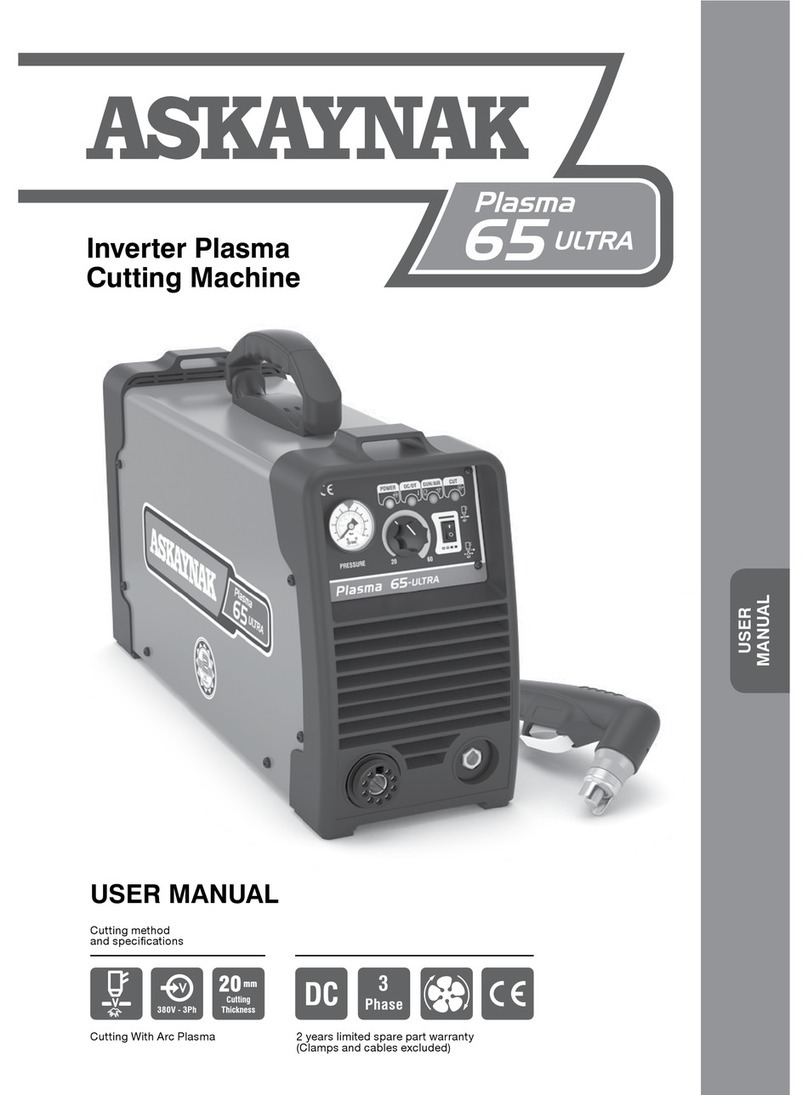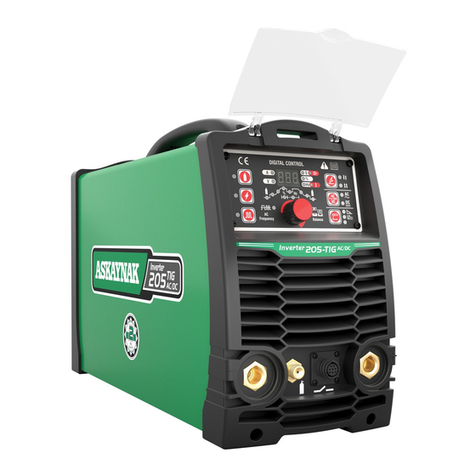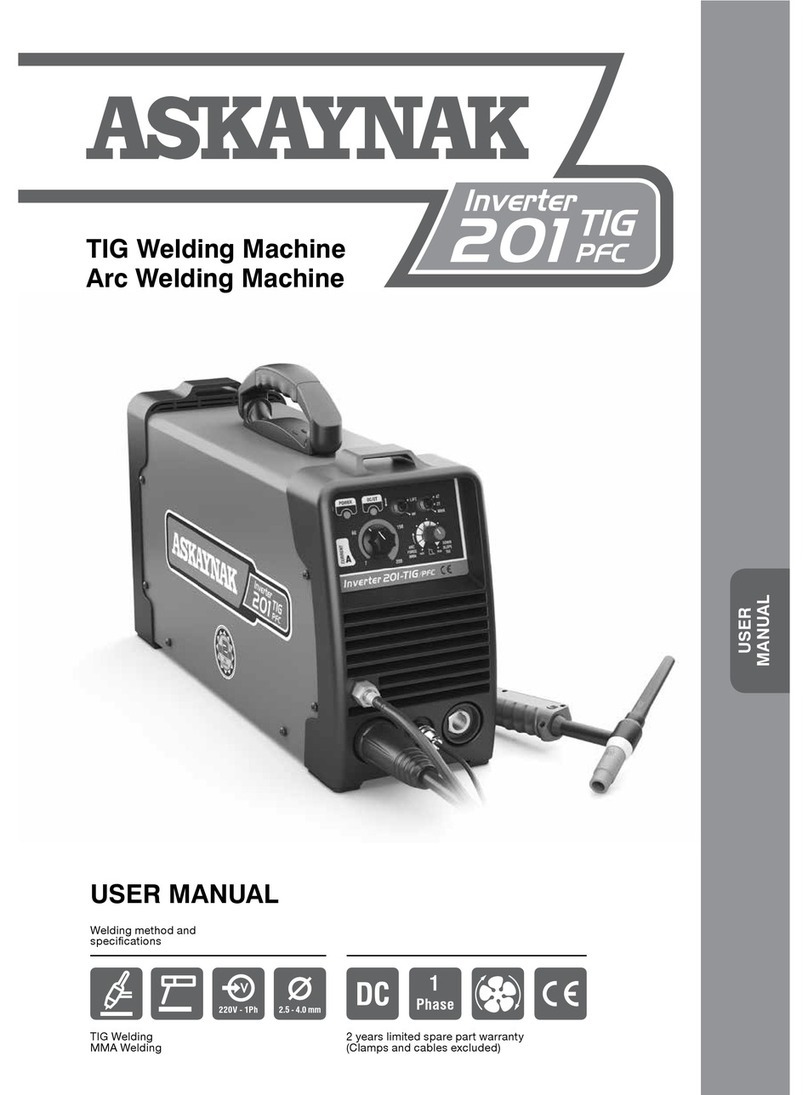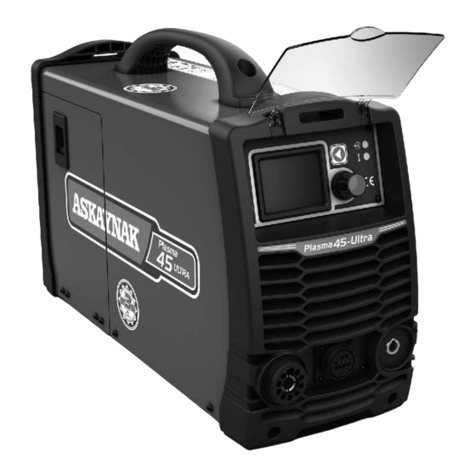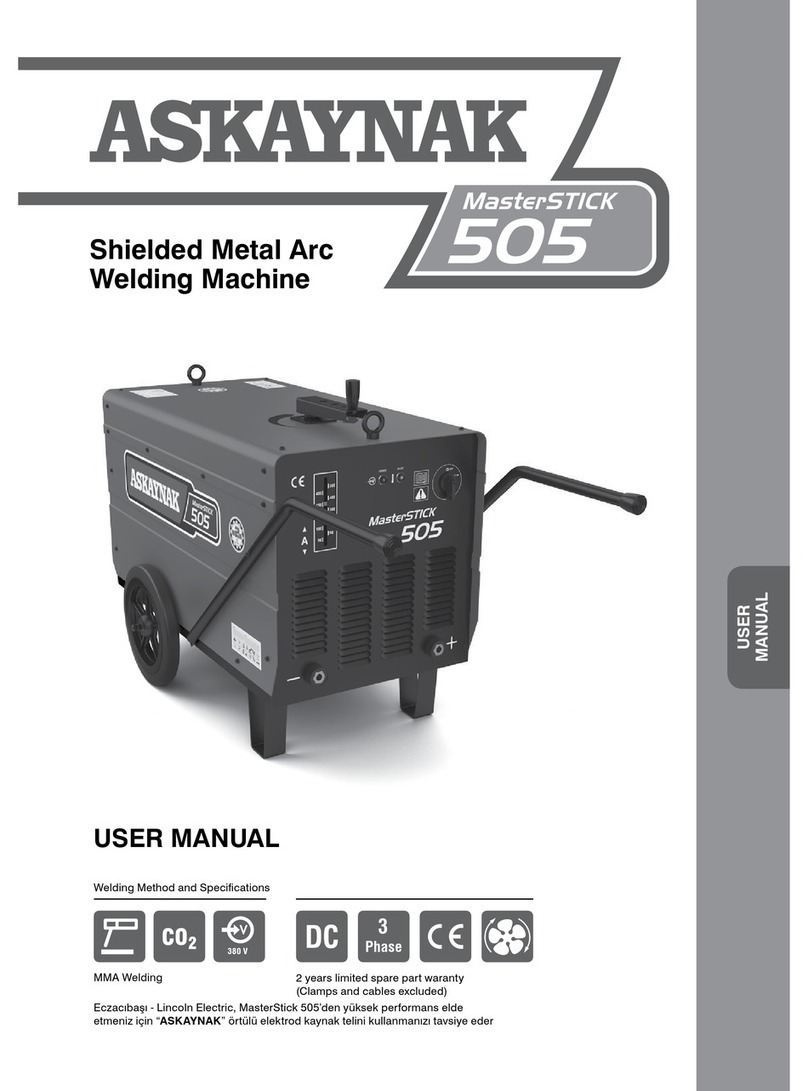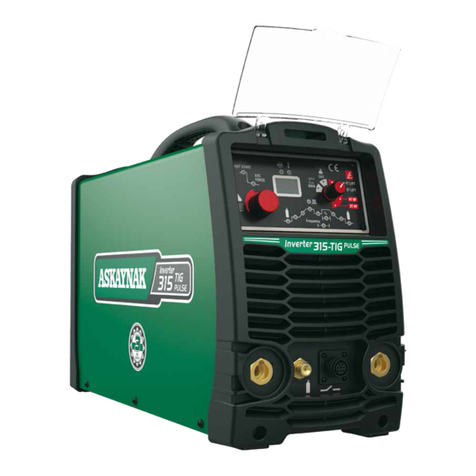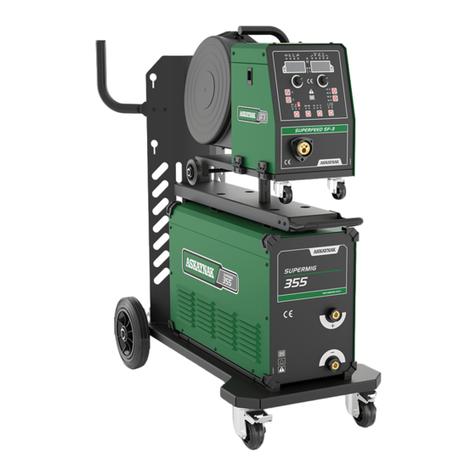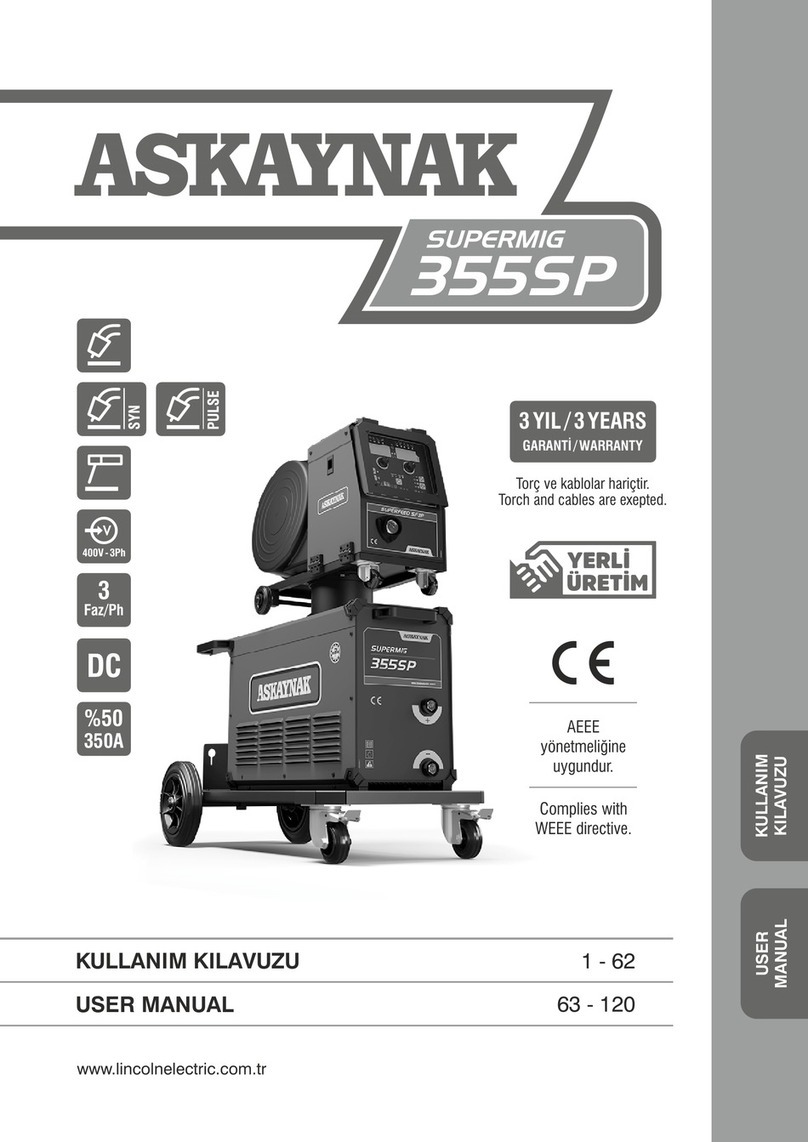operation can easily go through small cracks and openings to adjacent
areas. Until ensuring that precautions are used to fully clean ammable and
toxic gases, never weld any tanks, drums, containers or material. Never
operate welder in places that ammable gases, vapors or liquid fuels exist.
Always keep in mind the re risk due to high temperatures in arc welding.
Welding arc temperature may increase up to 5000 C°, but generally this
temperature is not the only re reason. Fire risk may be occurred due to
sparks or melted metals splashed around. These metals may splash up to
ten meters away. Therefore keep inammable materials away from welding
area. Also make sure that your work piece do not contact with any material
that may are when heated. Material, that may are with contact are divided
into three categories as liquids (fuel, oil, paint, thinner etc.), solids (wood,
cartoon, paper etc.) and gases (acetylene, hydrogen etc.).
Inspect the welding area. If there are systems operating with fuel or hydraulic
oil and if you cannot move welding area or system, place fire-resistant
protecting screen between them If you are working above oor level or on
stairway, make sure there is no ammable or explosive material below. Also
please remember that slag and sparks may splash on people around.
Special precautions should be used when welding in dusty environment.
Dust particles may burn and may cause sudden re or explosion. If you
don’t have information about the inammableness and fugacity of the dust
in the environment, do not start welding or cutting until it is inspected and
approved by expert and authorized person.
Before starting to the welding procedure, please check if there is any
ammable or self-ignition under heat coating on the surface of your work
piece.
When you have a break in welding process, please make sure that the
electrode holder do not contact to the ground or work piece.
If you are welding within ten meters to the place where ammable materials
located, have a observor near you. This observer should watch where the
sparks and splashes go and should access easily to the re extinguishers
when necessary. After welding process, please check if there is any fume
around for half an hour with the observer.
As in other emergency situations, first rule is not to panic in situations
where welding accidents happen. According to the size of the re, to warn
the others activate the re alarm, inform re station, shut down the plasma
cutting machine and leave the building from re exits as soon as possible.
FIRE DANGER MAY CAUSE ACCIDENTS : To prevent the risk for every
kind of arc glare and re, never leave the welding torch on welding desk or
any surface in contact with work clamp.
Never refuel near to the welding arc or if there is any engine operating in
the surrounding area. Stop the engine and allow it to cool before refueling
to prevent spilled fuel from vaporizing on contact with hot engine parts and
igniting. While relling the tank, do not spill fuel around.
Safety in Welding - 5
USER
MANUAL
54
